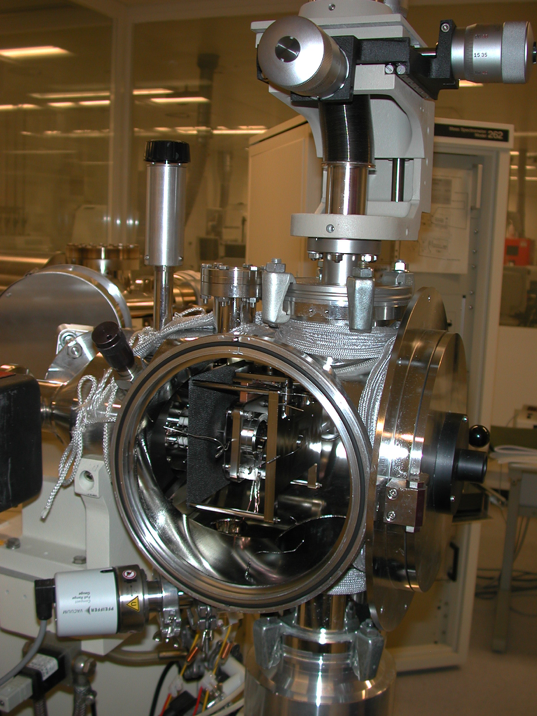Estimating the potential of thermal ionisation cavity sources for PlanetS
Introduction and Motivation
At ETH Zurich, a prototype thermal ionization cavity (TIC) source has been developed in a collaboration with the Commissariat à l’Energie Atomique et aux Energies Alternatives in France (figure below). The first analyses of 1 – 3 mm diameter uranium oxide particles yielded very encouraging results. The samples yielded U ion beam currents well above the cavity background and meaningful isotope ratios could be measured. However, the overall efficiency (ions detected per atoms loaded), which is an important figure of merit in mass spectrometry, could not be determined well due to the ill-defined mass range of the samples.
To quantify the overall efficiency of the new TIC source compared to conventional thermal ionization mass spectrometry (TIMS) by means of analysis of the same samples by both methods, the analysis of uranium adsorbed to single ion-exchange resin beads needed to be developed. This included the development of procedures to quantify how much of the sample element was adsorbed onto a single resin bead.

The prototype TIC source at ETH Zurich.
Results
Resin beads were prepared in class 10 (ISO 4) cleanroom conditions under a binocular. Typically, U amounts per resin bead were 140 pg ±15% (2RSD) and were determined by U concentration measurements on a sector-field inductively coupled plasma mass spectrometer (ElementXR). Different resins (transuranic TriskemTMTRUTMresin and anionic Bio-Rad AG 1-X8 resin) and different loading techniques (with or without the addition of AguadagTMand platinum powder) were investigated. Except for the loading technique including the addition of Pt powder, generally, an order of magnitude overall efficiency enhancement between conventional TIMS and the TIC source is demonstrated (figure below). For the anionic resin (Bio-Rad AG 1-X8) loaded with and without AquadagTMthe average overall efficiency for U analysis with the TIC source was 5%, which is among the best overall efficiencies of any analytical technique reported so far and should awake interest in the TIMS community.

Comparison of the overall efficiency for 140 pg U loads, between conventional source and cavity source TIMS. The enhancement in overall efficiency is more than ten-fold except for the sample loading protocol including the addition of Pt powder
Technology transfer / Industrial partners
During this project, two of the three manufacturers of multi-collector TIMS instruments were contacted. The unique features of our TIC source and first preliminary results were presented to them and possibilities for future developments and the possible market potential of such a source were discussed. Generally, the manufacturers showed much interest in thermal ionisation cavity sources. One of them is currently providing confidential information about the designs and ion optics of their mass spectrometers, to evaluate if one of their existing mass analysers would be suitable for a TIC source to be interfaced to the front of it.
Publications and Patents
Trinquier et al. 2019, “More than Five Percent Ionization Efficiency by Cavity Source Thermal Ionization Mass Spectrometry for Uranium Subnanogram Amounts“, Analytical Chemistry, 2019, 91, 6190−6199, link.
Contacts
Contact in PlanetS: Schönbächler Maria. and Colin Maden (email).
NON-PlanetS partner: CEA, Ile-de-France, Bruyères-le-Châtel, France.

